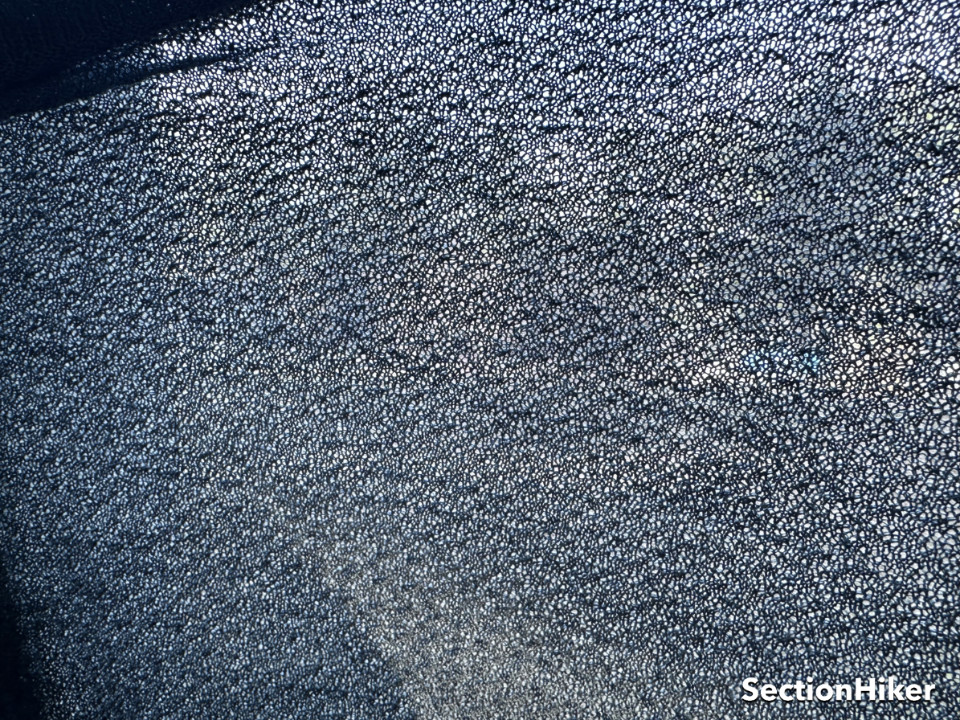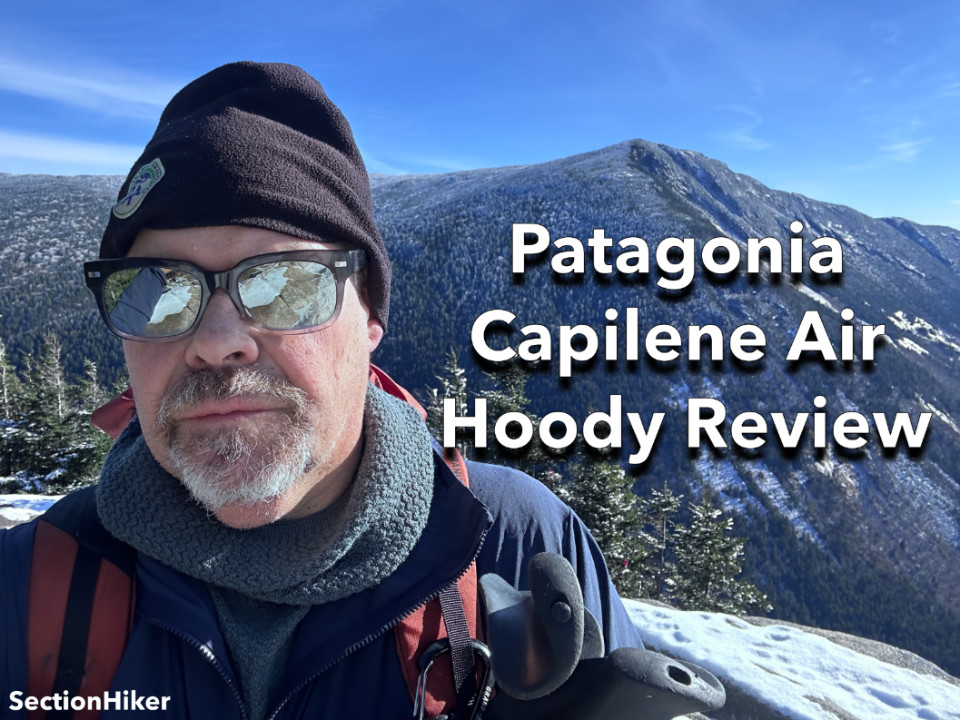The Patagonia Capilene Air Hoody may just be the perfect baselayer for cold weather hiking and winter sports. It’s made with an airy blend of 51% merino wool and 49% recycled polyester that wicks moisture, resists odor and dries in a flash. Wearable as a baselayer or midlayer, its 3D weave does a marvelous job of trapping warmth while a high collar and seamless hood allow for nuanced thermoregulation. Stink resistant and fast drying, it’s an excellent garment for mountain trips when you want one garment that can serve multiple functions and that looks good on the slopes and off.
Specs at a glance
- Gender: men’s (women’s available)
- Materials: 51% merino wool, 49% recycled polyester
- Hood: Under-the-helmet
- Pockets: None
- Fit: Slim, but with loads of stretch
- Weight: 5.8 oz in a size medium
Care Instructions: Machine Wash Cold Gentle Cycle, Do Not Bleach, Tumble Dry Low, Cool Iron

I’ve been wearing synthetic Patagonia Capilene baselayers for winter hiking and cross-country skiing for well over 15 years, but the Capilene Air fabric in the Capilene Air Hoody is unlike any Capilene fabric I’ve encountered before. First off, it’s made with a combination of merino wool and recycled polyester, combining stink resistance, warmth, and no-itch comfort with the added durability of polyester. But what differentiates it from other baselayers made with similar materials is its unique 3D weave, which traps warmth like old-school fishnet baselayers, with superior wicking and stretch. The degree of stretch in the Capilene Air fabric feels great and makes it perfect for highly dynamic winter sports from ice climbing and skiing to mountaineering.

While the Capilene Air Hoody is very warm for its weight when used as a baselayer, it’s has no wind resistance, and is best worn under a windproof layer like a wind shirt, soft shell, or hard shell jacket. I wear mine under a Rab Borealis soft shell jacket which is a great combination for early winter hikes or in conjunction with a thin midlayer for colder conditions. That’s really all I need for the vast majority of my winter hikes in New Hampshire since my body generates so much heat hiking up peaks.

The Capilene Air Hoody can be worn next to your skin like a true baselayer. While it is fitted slim, it has plenty of stretch for comfort or layering without feeling forced. The cut is hip length so it won’t ride up under a jacket. The wrists have simple stretch cuffs and the arm seams are offset and low profile so they are comfortable with backpack straps.
If there’s one downside to the Capilene Air Hoody, its that the fabric’s open weave can catch on protruding vegetation if worn off trail or in bushy areas. Its fibers can also be pulled out when it comes in contact with velcro, so keep it well away from backpack closures, tent doors, and jackets that close with a hook and loop style closure. .
If you don’t like hoodies but still want to try a Capilene Air garment, Patagonia also makes a Capilene Air Base Layer Crew Top and Capilene Air Base Layer Bottoms.

Recommendation
The Patagonia Capilene Air Hoody is an exceptionally warm and breathable baselayer that’s ideal for high-exertion activities in cold winter conditions. It’s made with 51% merino wool and 49% recycled polyester which makes it stink-resistant, itch-free, and more durable than wool alone. The 3D mesh weave of the Capilene Air Fabric allows perspiration to evaporate while still retaining plenty of body heat to keep you warm. The Capilene Air Hoody is also wearable as a mid-layer if you prefer and retains its excellent wicking and thermoregulation capabilities in that role. Either way, you’re not going to want to take it off once you use it because it is so comfortable and works so well. Highly Recommended!
| Shop at REI | Shop at Patagonia |
Disclosure: The author owns this garment.
 SectionHiker.com Backpacking Gear Reviews and FAQs
SectionHiker.com Backpacking Gear Reviews and FAQs 
My “go to” layering system for spring, fall, and winter hiking for a few years now has been a Capilene t-shirt, Cap Air Hoody, and Black Diamond Alpine Start wind shell. the hoody is unbelievably warm for its’ really light weight. however, as per the review, it should always be paired with a shell of some sort.
I started with using it as a midlayer too, but quickly switched to using it as a baselayer because it is so comfortable that way and I think wicks better. I used the Alpine Start (softshell jacket) myself for many years and this new Borealis is fairly new. It has mesh backed Napolean pockets (2) on the chest which help with venting as well as gear storage. It’s very nice. Definitely a keeper.
I discovered the Capilene Air Hoody in 2021. On a sub-freezing hike a couple of trail runners were finishing up wearing nothing but the Air Hoody. We asked them about it and they told us it’s amazing for cold weather under high exertion. Now I have 3. And I also pair it with the BD Alpine Start. For me it’s only a base layer.
One option to consider if extra warmth is needed but wind is not an issue: put a breatheable fleece over it. When climbing while cold recently I layered up with a Polartec Alpha Direct layer over the Capilene Air Hoody. It worked great. A little warmer, but could still feel a little of the air wicking away sweat.
How does the Capilene Air Hoody compare to the KUIU Peloton 97 Fleece Zip-T Hoodie reviewed last month? Comparing the two reviews at a glance, I get the impression that you find the Capilene more impressive, no?
They serve different functions and in different scenarios. I’ve actually worn them together. The Peleton 97 is a mid-layer, while the Cap Air is more of a base layer. The Cap air is something I wear on very cold days and the Peleton is a lightweight layer I wear when I want a little more warmth over a baselayer, like in the autumn. The Cap Air is definitely more “impressive” though for its technological artistry and blending of two types of cloth.
This used with a mesh back cycling vest or an Arc’teryx Squamish sounds like a winner!
Yep. That’ll will keep you warm.
Replaced a heavier Smartwool crew top with one of these. Surprisingly warm and 2+ ounces lighter.
Wool is heavy.